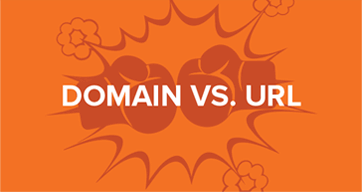
“Can you please register the following URL?” is a question we get a lot. The technical answer is “no, we cannot.” What the individual is asking is really “can you please register the following domain?” Now our answer is, “of course!” My goals is to help you understand the difference between these two terms.
A domain is simply a physical address that tells a person’s browser where to go. Here is an example:
marketpath.com
That is a domain. It is also referred to as a TLD or top level domain because a company or individual can register to use it. Here’s another example of a domain:
www.marketpath.com
This is a domain but is also called a sub-domain because the www part is the sub-domain of marketpath.com. You can easily continue this by adding additional sub-domains, such as support.help.marketpath.com.
Domains can only have letters, numbers, dashes, or underscores in the name. No other symbols may be used. International domains, on the other hand, like .谷歌, probably have similar standards but I can’t read written Chinese/Mandarin, or any other non-traditional character so you’re on your own with those.
To use an analogy, a domain simply specifies the building address but provides no other information.
URL is an acronym for Uniform Resource Locator. URL’s contain a domain but have additional information, as well. An example URL is below:
https://www.marketpath.com/contact-us
Notice the additional parts at the beginning and the end. The first part, https://, designates the protocol. This tells a browser or other application how to get to the domain. The second part, /contact-us, is the path.
The protocol can be http:// (non-secure web), https:// (secure web), ftp:// (file transfer), mailto://, etc. There’s a lot more to the first part of a URL then this but for the intent of this post it should suffice.
The path has a lot more flexibility in it’s format and depends on the type of server handling the requests. Here are a few example paths:
/about-us/our-team.html
/about-us/out-team
/blog/a-post-about-something
/blog?id=3339
/app/myscript.aspx
/app/myscript.php
/app/myscript.php?name=Joe%20Schmoe
That’s barely scratching the surface but hopefully you get the point. To expand on my earlier analogy, the domain is like a building’s physical address. The protocol is the method of transportation to get to that building (e.g. walk, bus, car, or train). The path is like one of the suites in the building. And finally, the URL is the entire set of instructions altogether.
Hopefully that helps clear up the difference between a domain and a URL, at least a little.
A domain: www.berries.com
A URL: https://www.berries.com/belgian-chocolate-covered-strawberries-SC6